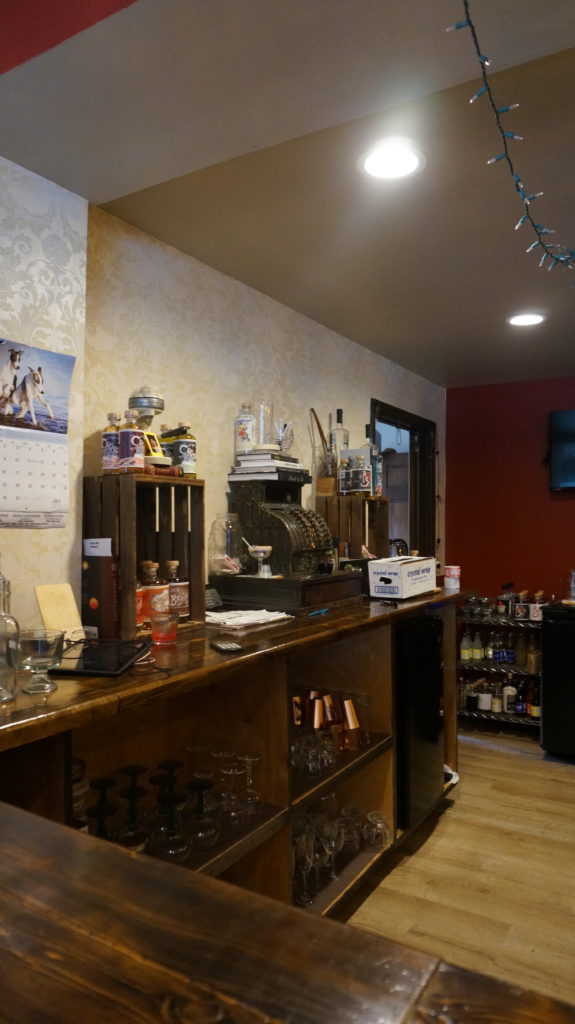Gathering of fall spirits
by D.E. Bentley –
As the trees scratch eerily against the window outside, I am thinking about some recent spirits I encountered, the kind of spirits that warm your soul and result in a gathering of tasters. Yes, that kind of spirits, in this case gins, some with touches of fall spices and hints of floral aroma floating on that same autumn wind.
That, and rye whiskey.
We discovered Honeoye Falls Distillery (HFD) soon after it opened in 2015, a couple years after we had moved to Canadice – from points north, and south. We stopped in several times to sample their earliest spirits and chatted with biochemist and botanist Teal Schlegel, one of the co-owners and the Head Distiller. More recently, I had the pleasure of visiting with another co-owner, CEO Scott Stanton, to learn more about Honeoye Falls Distillery – and the revival of craft distilleries in New York State.
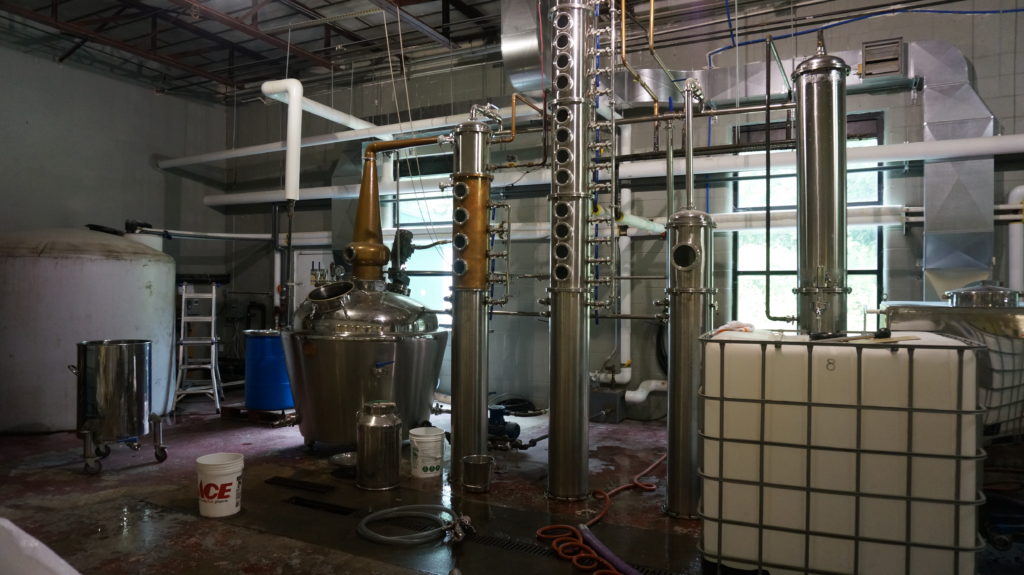
A little New York State distilling history:
According to the New York State Distillers Guild – www.nydistilled.com – (there’s a web site for everything!) the first state commercial distillery was built on Staten Island in 1640 – that’s a long time ago – by Dutch settlers who distilled a grain-based botanical gin with local botanicals. After independence, whiskey became the “American spirit.” When a whiskey tax imposed in 1791 was repealed in 1802, distilling grew until another tax was imposed during the Civil War (damn taxes!) and drove the distillers underground. By the 1880’s, big-business (damn BB!) resulted in the closure of most New York distilleries. Prohibition (1920-33) put the final nails in the coffin. Thanks to some early 21st century whiskey pioneers – New York’s first craft distiller since prohibition opened in 2003 – and the NYS Farm Distillery Act passed in 2007, these welcome and friendly spirits have returned from the grave and offer us a great way to usher in good fall tidings.
The Distilling Process:
In the distilling process, the grains are mixed with warm water to create a mash. Through a chemical reaction, carbohydrates are broken down into simple sugars that can be consumed by yeast. The yeast multiplies and converts the sugars into alcohol and carbon dioxide. The mix is now called wort, really a simple beer. Making beer is relatively simple (although making good beer is an art), but the next part of the distilling process is where things get more complicated. The size and shape of the still and the temperatures used in the distilling process are carefully controlled to determine the resulting flavor and alcohol content of the spirits. Honeoye Falls Distillery uses a hybrid pot still, which allows them the flexibility to make many different craft spirits. The still has a pot still at its base and a series of column stills – also called continuous stills, allowing the distiller to control the specifics of distillation along the way. These distilling alterations and the grains and botanicals added are what make each spirit unique. Some spirits are aged in wood casks, another factor that adds complexity to the spirit-making process.
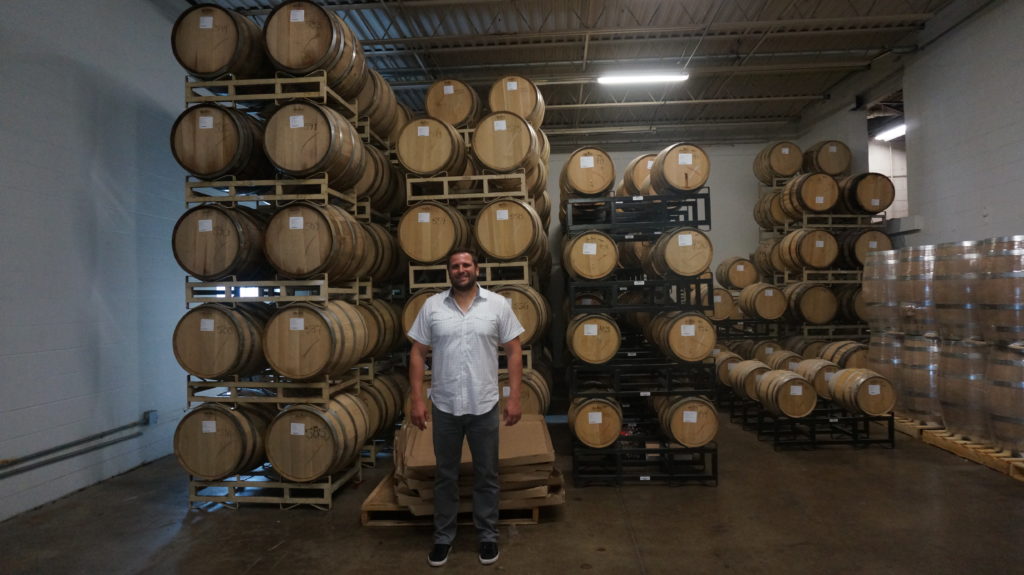
Spirits in Honeoye Falls:
Honeoye Falls Distillery’s stillhouse and craft cocktail bar opened in 2015 after two “whiskey enthusiasts” had an idea, while sipping whiskey. As with the best crazy ideas, they took their whim to reality and the rest is part of this continuing tale of New York State distilling history, and the return of whiskey – and rye – to New York State. Scott Stanton, one of the entrepreneurs who helped bring the distillery to Honeoye Falls, was on hand on August 1st, 2018 to give me a tour of Honeoye Falls Distillery’s operation. While there, I also met Celia Cleary, the distillery’s General Manager, and Distiller JP Liberatore —who was actively working to help bring another batch of gin to the table.
Distilled beverages are made from the collection of select vapors from a fermented liquid by heating it to the ideal temperature. The process may sound simple, but takes specialized equipment and someone – like Stanton’s partner Teal Schlegel – with knowledge of the process and of the grains and herbs that go into the mix. At Honeoye Falls Distillery, all parts of the distilling process happen on site, from distilling to labeling to aging and sales distribution.All this begins in neighboring fields. Most of the grains and botanicals used in the distillery’s products are grown in New York. The bulk of the grains are from Howlett Farms in Avon, NY. Established in 1880, the farm has expanded from grain production to marketing and handling of grains from the North East’s farmers. The beauty of the NYS Farm Distillery Act is that it incentivizes the use of local agricultural products, benefitting the growers and the taxpayers by keeping the money in the state. The benefits do not end there. In this beautiful “Circle of Whiskey,” as Stanton called it, the spent grains are picked up and used as feed for hogs. These beasts are raised and slaughtered humanely at Fire Creek Farms in Livonia, NY and some become part of the Honeoye Falls Distillery’s brunch and dinner menu offerings, paired with their spirits.
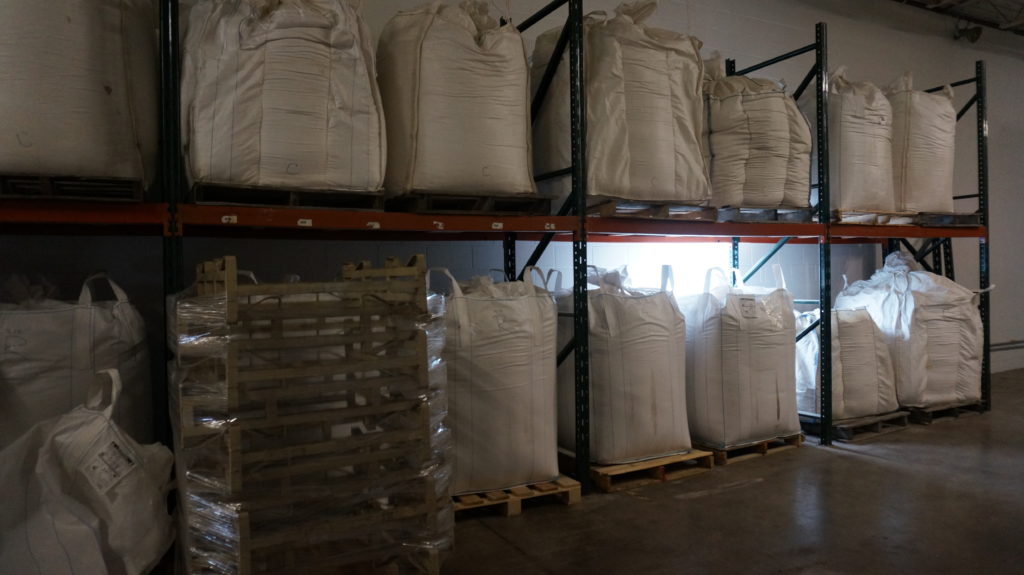
HFD’s spirited concoctions:
Honeoye Falls Distillery makes gins, whiskeys and absinthes. Their newest creation, released in March of 2018, is their F. Schlegel and Sons Flower City Gin, named after Teal Schlegel’s great-grandfather, a Rochester nurseryman. Gin is made from a neutral spirit (made with grain or fruit) that is infused with various botanicals. As the Flower City name implies, their newest gin is infused with floral botanicals including lavender, orris root (from the iris), rose hips, hibiscus flower and cardamom. Their red-labeled Devil’s Bathtub Gin is a traditional barrel aged gin, with the prominent pine flavor that comes from juniper, its main ingredient. Their brown-label rye barrel aged gin is a more contemporary gin, with a baking spice tilt perfect for fall. It contains eleven botanicals in all, including cinnamon, cloves, cubeb pepper (Piper cubeba – primarily grown in Java and Sumatra) and nutmeg. 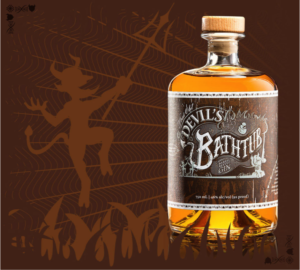
Honeoye Falls Distillery currently offers two rye whiskey products: A Red Saw Bourbon Whiskey and Red Saw Rye Whiskey. Whiskey can be made from a variety of grains, with corn, wheat, rye and barley being the most popular grains in New York State production. Single malts are traditionally made with 100% barley, whereas rye whiskey is primarily rye with corn and barley added. Each grain imparts a different flavor to the distilled beverage, as does the aging process. In the case of the HFD Red Saws: The Bourbon Whiskey is 51% corn, 34% rye and 15% malted barley; Their rye whiskey is 85% rye and 15% malted barley. Whisky enthusiasts can look forward to the release of a straight rye and bourbon in 2019 and in 2020 to bourbon and rye with a minimum four-year age statement (good things take time and get better with age).
I love the flavor of anise and have long been a fan of absinthe, but have not yet tried the green or red absinthes distilled at HFD: La Cascade Verte Absinthe and La Cascade Rouge Absinthe. The verte is a traditional 1800s recipe distilled with “the holy trinity of absinthe botanicals: anise, fennel and wormwood.” The red, also from an 1800s recipe, is a Swiss style anise-forward spirit with added citrus and angelica. Both use botanicals for color, with mint family botanicals dominant in the green and hibiscus flowers adding a floral character in the red. I look forward to giving these a try, but was excited about trying the Flower City Gin and revisiting the others I had tasted before.
Impromptu gatherings of tasters:
I know what I like, and what I don’t like, but have never been great at describing flavors in beverage tastings. As one friend put it, “I can’t find the right adjective.” With this in mind, I enticed some unsuspecting guests to help out with the sampling research for this spirited tale. I will say, that during two separate tasting sessions all present were happy to be “tricked” into trying these welcome and warming treats. The first opportunity for a social tasting happened one evening several weeks after I visited HFD, when some family and friends joined us for dinner on our deck. I pulled out several of the Honeoye Falls Distillery’s offerings along with some paper and writing tools and traded tastings of each spirit for tasty morsels of feedback – and a willingness to stick around a bit longer. All present were willing to give it a try.
Tasting requires an ability to tune into the smells, flavors and feel of the spirits – some spirit (and wine) enthusiasts call this a mouthfeel. Our enthusiastic unsuspecting tasters ranged in age from seventy-five down to twenty-five, with a diversity of drinking experiences and preferences. It was interesting to hear and see the reactions as each sample was shared. All had a little to say about most of the samplings, although our twenty-seven year old taster offered the most colorful responses. Some of the descriptors used for the Flower City Gin were: “fruity” (75 –Finger Lakes dry reds – little spirit experience) “earthy and fragrant” (56 –single malt drinker); “Amusing nose, flinty, hints of flower nectar” (53– another single malt enthusiast who brews beers, braggots, meads); “flowery, nectary, clovery” (29 –enjoys occasional Jameson cocktails and a gin martini with steak); “S’more-like initially, then smooth and sweet” (28 –likes Irish whiskey and bourbon; hates sweet cocktails); “It feels like a hula hoop going around my tongue, very fruity notes (27–Likes BV; likes to drink); and “flowery notes evident” (25 –likes heavy, robust stouts).
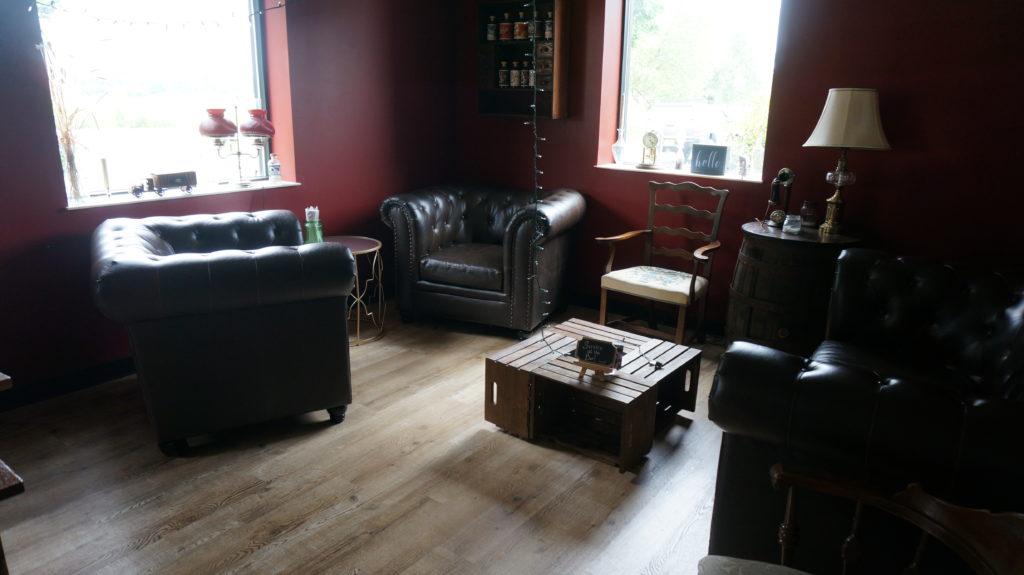
We repeated the rounds with small samples of two other spirits – responses shared here in the same order as above. Some responses for Devil’s Bathtub Gin (red label): “I can’t find the right adjective” (this led to a group discussion as to whether a list of tasting adjectives should or should not be provided; undecided); “Sweet, then an after bite”; Did not taste; “Spicy, warming fall gin”; “Warm, traditional gin”; “You may flip over your handle bars; be careful folks!”; and, lastly, “Allspice, cinnamon; I prefer these flavors.” And for the Red Saw Rye Whiskey: “Spicy”; “Caramel”; Did not taste; “Smoldery, yet pleasing; not harsh”; and…”Smells like wood barrels that once held cherries; like the feeling and smells that linger after a long night around a campfire – smoky.”
A separate follow up tasting of the Flower City Gin by a couple other unsuspecting visitors resulted in some lively responses: One shared, “Smooth, floral, hot and strong – like I like my men;” another (male–51) described it as “Strong, distinctly flavored; tilts heavily toward beer (tilts heavily from it too).” And the Devil’s Bathtub: “Has a spicy kick to it!” All in all, the tasters shared that they really enjoyed the spirits they tasted and that the opportunity inspired them to try more distilled concoctions in the future.
Did I mention food:
Speaking of tasty treats, I nearly failed to mention that *Honeoye Falls Distillery offers Brunch on Sundays (10 am- 2 pm) and dinner (Wed., Thurs 5-10 pm and Fri., Sat. 4-11 pm) in addition to their tastings and creative cocktail offerings at the bar. A kitchen crew directed by Head Chef Jed Bednarski staffs the kitchen at Honeoye Falls Distillery. Chef Bednarski creates Mexican influenced menu offerings that change regularly and incorporate an abundance of locally sourced ingredients. I love brunches. There is something about the thought of having a leisurely Sunday meal that helps one unwind from the more formal weekday routine and enjoy the remaining hours of the weekend. The Brunch menu – we have been twice and have really enjoyed both visits – includes small plates such as jalapeño cheddar hush puppies and churros that were absolutely delightful. Big plates include offerings such as lox benedict and buttermilk fried chicken & waffles. There is a “Bottomless Brunch” option that includes small and big plate options and unlimited bloody Mary’s , Glenora Mimosas or bartender choice ‘screwdrivers’ made with HFD spirits.
All this adds up to a wonderfully spirited fall outing. Legislative changes in New York State that have ushered in beverage industry innovators have significantly and rapidly altered the state’s food and beverage industry, while simultaneously helping to support alternative agricultural practices. These changes benefit the beasts we eat and the environment in which we live, while also benefitting local farmers and offering more options for everyone who enjoys good food and good drink. Fall offers a perfect opportunity for long time residents and tourists alike to venture out to someplace new – or revisit a favorite – to sample and enjoy a bit more of what this wonderful region has to offer. Honeoye Falls Distillery is a great first stop.
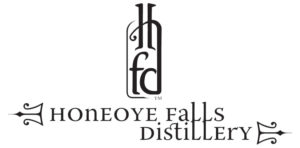 * More information can be found at:
* More information can be found at:
honeoyefallsdistillery.com or on Facebook at Honeoye Falls Distillery.
More about Fire Creek Farms at http://thefirecreekfarms.com/
